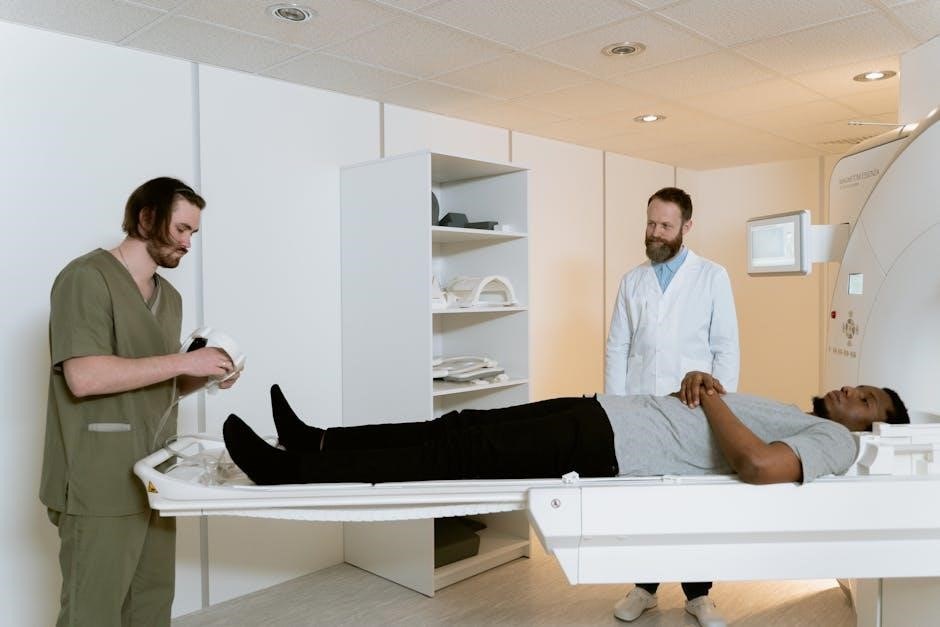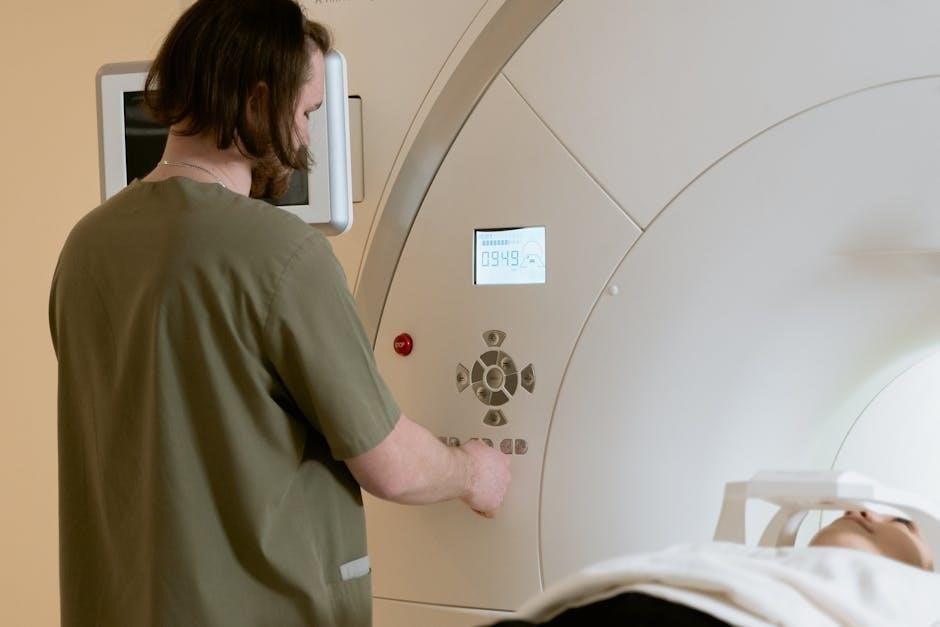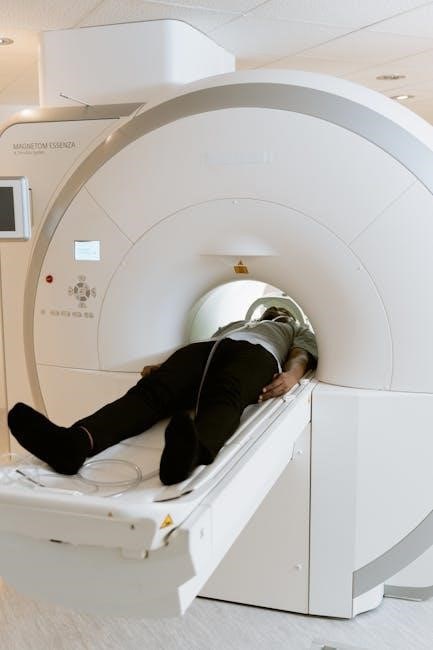The DISC assessment is a widely used behavioral tool helping individuals understand their personality styles and improve communication, teamwork, and leadership skills in personal and professional settings.
Overview of the DISC Model
The DISC model is a behavioral assessment tool that categorizes individuals into four primary personality styles: Dominance (D), Influence (I), Steadiness (S), and Conscientiousness (C). These styles reflect observable behaviors and tendencies, providing insights into how people interact with their environment. The model is non-judgmental, focusing on understanding rather than evaluating. It measures two dimensions: directness (assertiveness) and openness (willingness to interact). By identifying these traits, the DISC model helps individuals and organizations improve communication, teamwork, and leadership. Its simplicity and practicality make it a popular choice for personal and professional development, enabling effective collaboration and addressing behavioral preferences in various contexts.
Background and Development of the DISC Test
The DISC assessment originated from the work of William Moulton Marston, who introduced the theory in his 1928 book, Emotions of Normal People. Marston proposed that individuals exhibit four primary emotional drives: Dominance, Influence, Steadiness, and Conscientiousness. The modern DISC test was later developed by John Cleaver in the 1950s, adapting Marston’s theories into a practical assessment tool. Over the years, the test has evolved to become a widely recognized instrument for understanding behavioral preferences. Today, it is used globally by millions, aiding in personal development, workplace communication, and team building. Its enduring popularity stems from its simplicity and effectiveness in fostering self-awareness and interpersonal understanding.

Understanding the Four DISC Personality Styles
The DISC model categorizes personalities into four styles: Dominance, Influence, Steadiness, and Conscientiousness. Each style reflects unique behavioral traits, guiding personal and professional growth through self-awareness.
Dominance (D) ‒ Traits and Characteristics
Individuals with a Dominance (D) personality style are assertive, results-driven, and confident leaders. They prioritize action and achievement, often taking charge in challenging situations. D personalities are decisive, goal-oriented, and thrive in competitive environments. Their strong will and confidence can inspire others, but may sometimes come across as overly direct. They value control and efficiency, preferring to focus on the big picture rather than details. In team settings, they excel at driving progress and overcoming obstacles. However, their assertiveness can sometimes lead to impatience with slower-paced individuals. Overall, D personalities are natural problem-solvers who aim to achieve tangible results and maintain authority in their domains.
Influence (I) ⏤ Traits and Characteristics
Individuals with an Influence (I) personality style are outgoing, enthusiastic, and highly sociable. They thrive in interactive environments, excelling at motivating and inspiring others. I personalities are natural communicators, with a strong emphasis on building relationships and fostering collaboration. They are optimistic, expressive, and enjoy being the center of attention. Their ability to connect with people makes them effective at influencing decisions and fostering teamwork. However, their focus on social interaction can sometimes lead to a lack of depth in task-oriented situations. I personalities are driven by recognition and appreciation, preferring a dynamic and fast-paced work environment. Their warmth and charisma make them natural motivators, capable of energizing those around them.
Steadiness (S) ‒ Traits and Characteristics
Individuals with a Steadiness (S) personality style are known for their reliability, consistency, and patience. They value stability and often prefer structured, predictable environments. S personalities are excellent listeners, empathetic, and supportive, making them trusted colleagues and friends. They prioritize maintaining harmony and avoiding conflict, which can sometimes lead to resistance to change. Their calm and composed nature allows them to handle stress effectively, making them dependable in challenging situations. S personalities are driven by loyalty and a sense of duty, often focusing on long-term goals. Their steady approach ensures tasks are completed thoroughly, even if it means working at a slower, more deliberate pace.
Conscientiousness (C) ‒ Traits and Characteristics
Individuals with a Conscientiousness (C) personality style are meticulous, detail-oriented, and value accuracy. They thrive in structured environments, preferring to plan and organize tasks systematically. C personalities are analytical and cautious, often taking time to evaluate situations before making decisions. Their reserved nature makes them more comfortable with written communication than spontaneous interactions. They are highly reliable and committed to maintaining high standards, ensuring tasks are completed with precision. However, their focus on perfection can sometimes lead to over-analysis or reluctance to delegate. Their methodical approach and dedication to quality make them invaluable in roles requiring attention to detail and adherence to procedures.

How to Take the DISC Assessment Test
The DISC test involves ranking adjectives and answering behavioral questions to identify your personality style. It typically takes 10-15 minutes, focusing on routine tasks and preferences.

Step-by-Step Guide to Completing the Test
Completing the DISC assessment involves a straightforward process. First, you’ll receive a questionnaire asking you to rank adjectives from 1 to 4 based on how well they describe you. Next, you’ll answer questions about your behavioral preferences in routine tasks and comfortable environments. The test typically includes 24-28 questions, focusing on directness and openness. After submitting your responses, the system calculates your scores for Dominance, Influence, Steadiness, and Conscientiousness. The highest and second-highest scores determine your primary and secondary personality traits. The test is quick, taking about 10-15 minutes, and provides insights into your behavioral style, helping you improve communication and teamwork. No right or wrong answers exist; the goal is to reflect your true self accurately.
Interpreting Your DISC Profile Results
Your DISC profile provides insights into your behavioral style, highlighting strengths and challenges. The results are divided into three parts: an introduction to the DISC model, an understanding of your personal style, and practical applications. Scores are calculated based on your responses, with the highest indicating your dominant traits. Graphs and charts visually represent your placement in the DISC framework, showing tendencies toward Dominance, Influence, Steadiness, or Conscientiousness. The report also offers actionable recommendations for personal growth and professional development. Understanding your profile helps you leverage your strengths and address weaknesses, enhancing communication, teamwork, and leadership effectiveness. There are no “right” or “wrong” profiles—it’s about self-awareness and improvement.

Benefits and Applications of the DISC Test
The DISC test enhances workplace communication, improves leadership skills, and supports team building by understanding individual behavioral styles, fostering collaboration, and promoting personal and professional growth effectively.
Workplace Applications and Team Building
The DISC assessment is a valuable tool for enhancing workplace dynamics and fostering effective team building. By identifying individual behavioral styles—Dominance, Influence, Steadiness, and Conscientiousness—employers can better understand employee strengths and preferences. This insight enables improved communication, collaboration, and conflict resolution within teams. Managers can use DISC profiles to assign roles that align with team members’ natural tendencies, boosting productivity and job satisfaction. Additionally, DISC facilitates leadership development by helping leaders adapt their styles to meet the needs of their team. It also supports diversity and inclusion by promoting appreciation for different work approaches. Overall, DISC contributes to a more cohesive and high-performing work environment.

Personal Development and Self-Awareness
The DISC assessment is a powerful tool for personal development, enabling individuals to gain deeper insights into their behavioral styles and tendencies. By understanding their unique personality traits—whether Dominance, Influence, Steadiness, or Conscientiousness—individuals can identify strengths and areas for improvement. This self-awareness fosters personal growth by helping people set realistic goals and develop strategies to overcome challenges. The DISC model also encourages emotional intelligence, allowing individuals to better navigate interpersonal relationships and adapt their behaviors in various situations. Ultimately, the test serves as a non-judgmental guide for self-reflection, empowering users to embrace their natural styles while striving for continuous improvement in both personal and professional contexts.

Improving Communication and Leadership Skills
The DISC assessment is a valuable tool for enhancing communication and leadership abilities by providing insights into individual behavioral styles. By understanding their own tendencies and those of others, leaders can adapt their communication strategies to foster collaboration and reduce conflicts. For instance, a Dominance-style leader may focus on clear, direct messaging, while an Influence-style leader might prioritize active listening and empathy. This awareness enables leaders to tailor their approaches, ensuring effective communication across diverse teams.
The test also offers actionable insights for improving leadership skills, such as encouraging Dominance types to balance assertiveness with empathy or helping Steadiness types to communicate more openly. By leveraging these insights, leaders can inspire and manage teams more effectively, driving both personal and organizational success. The DISC model emphasizes adapting communication styles to meet the needs of others, fostering a more harmonious and productive work environment.

Strengths and Weaknesses of Each DISC Style
Each DISC style has unique strengths and challenges, such as dominance in decision-making but impatience, or steadiness in reliability yet resistance to change, aiding personal and professional growth.
Identifying Strengths for Personal Growth
Identifying strengths through the DISC assessment enables individuals to leverage their natural tendencies for personal growth. Those with a Dominance (D) style excel in decision-making and leadership, while Influence (I) types thrive in communication and motivation. Steadiness (S) individuals are reliable and consistent, making them excellent team players. Conscientiousness (C) styles are detail-oriented and analytical, excelling in planning and organization. Recognizing these strengths allows individuals to capitalize on their innate abilities, fostering confidence and self-awareness. By understanding their strengths, individuals can align their behaviors with personal and professional goals, enhancing overall effectiveness and satisfaction in various aspects of life.

Addressing Weaknesses for Professional Development
The DISC assessment highlights areas for improvement, enabling individuals to address weaknesses that may hinder professional growth. For instance, Dominance (D) styles may need to work on delegation and empathy, while Influence (I) types should focus on conflict resolution and depth of focus. Steadiness (S) individuals may benefit from embracing change and asserting themselves more confidently. Conscientiousness (C) styles should aim to balance analysis with action and reduce perfectionism. By acknowledging these areas, professionals can develop strategies to overcome limitations, enhancing their effectiveness in workplace interactions and leadership roles. Self-awareness and targeted development plans are key to transforming weaknesses into strengths, fostering long-term career success and personal satisfaction.
The DISC assessment is a powerful tool for self-discovery and professional growth, offering insights into personality styles and their impact on behavior. By understanding individual strengths and weaknesses, users can enhance communication, leadership, and teamwork. The next steps involve applying these insights to real-life scenarios, fostering personal development and improving workplace dynamics. Individuals are encouraged to share their profiles with colleagues or mentors to gain external perspectives and refine their strategies. Regular reflection and practice will help integrate DISC principles into daily interactions, leading to lasting positive change; Embracing the DISC model can unlock new opportunities for personal and professional success, empowering individuals to reach their full potential.